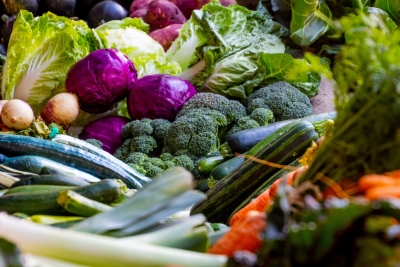Nairobi, 4 March 5 : An estimated 931 million tonnes of food, or 17 per cent of total food available to consumers in 2019, went into the waste bins of households, retailers, restaurants and other food services, a new UN research said on Thursday.
The study was conducted to support global efforts to halve food waste by 2030.
The weight roughly equals that of 23 million fully loaded 40-tonne trucks — bumper-to-bumper — enough to circle the earth seven times.
The Food Waste Index Report 2021 from the United Nations Environment Programme (UNEP) and partner organisation WRAP looks at food waste that occurs in retail outlets, restaurants and homes — counting both food and inedible parts like bones and shells.
The report presents the most comprehensive food waste data collection, analysis and modelling to date, and offers a methodology for countries to measure food waste.A total of 152 food waste data points were identified in 54 countries.
The report finds that in nearly every country that has measured food waste, it was substantial, regardless of income level.
It shows that most of this waste comes from households, which discard 11 per cent of the total food available at the consumption stage of the supply chain.
Food services and retail outlets waste five per cent and two per cent, respectively.On a global per capita-level, 121 kilograms of consumer level food is wasted each year, with 74 kilograms of this happening in households.
The report also includes regional and national per capita estimates.
Food waste has substantial environmental, social and economic impacts.For example, at a time when climate action is still lagging, eight-10 per cent of global greenhouse gas emissions are associated with food that is not consumed, when losses before consumer level are taken into account.
“Reducing food waste would cut greenhouse gas emissions, slow the destruction of nature through land conversion and pollution, enhance the availability of food and thus reduce hunger and save money at a time of global recession,” said UNEP Executive Director Inger Andersen.
“If we want to get serious about tackling climate change, nature and biodiversity loss, and pollution and waste, businesses, governments and citizens around the world have to do their part to reduce food waste.The UN Food Systems Summit this year will provide an opportunity to launch bold new actions to tackle food waste globally.”
With 690 million people affected by hunger in 2019, a number expected to rise sharply with COVID-19, and three billion people unable to afford a healthy diet, consumers need help to reduce food waste at home.
Countries can raise climate ambition by including food waste in Nationally Determined Contributions to the Paris Agreement, while strengthening food security and cutting costs to households.
This makes food waste prevention also a primary area for inclusion in COVID-19 recovery strategies.
“For a long time, it was assumed that food waste in the home was a significant problem only in developed countries,” said Marcus Gover, CEO of WRAP.
“With the publication of the Food Waste Index report, we see that things are not so clear cut.With only nine years to go, we will not achieve SDG 12 Target 3 if we do not significantly increase investment in tackling food waste in the home globally.This must be a priority for governments, international organisations, businesses and philanthropic foundations,” Gover said.
The Sustainable Development Goal (SDG) target 12.3 aims at halving per-capita global food waste at the retail and consumer levels and reducing food losses along production and supply chains.One of the two indicators for the target is the Food Waste Index.
A growing number of countries have measured food waste in recent years.
The reports finds that 14 countries already have household food waste data collected in a way that is compatible with the Food Waste Index.
A further 38 countries have household food waste data where small changes in methodology, geographical coverage or sample size would allow them to create an SDG 12.3-compatible estimate.
A total of 54 countries had data for at least one of the three sectors covered by the report
.






